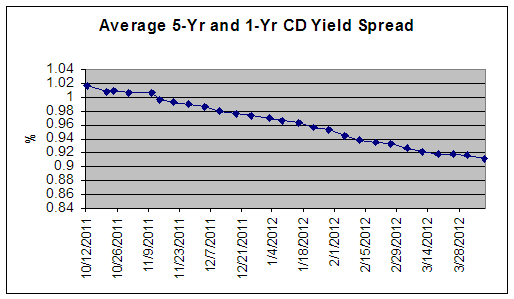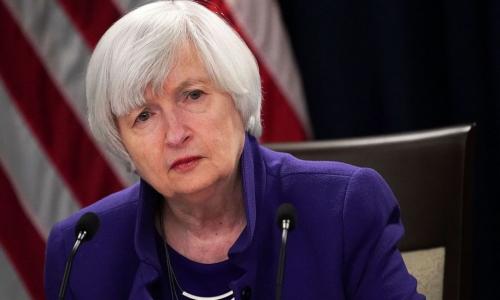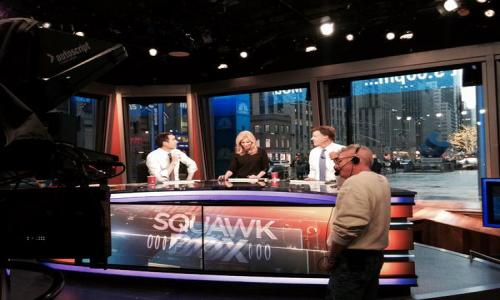There were several reports over the past week which seemed to indicate that the economy has stabilized and maybe even turned the corner. The latest GDP figures showed that the economy grew by 5.7% in the fourth quarter of 2009, above economists expectations. In addition, the unemployment rate in January dipped below 10%.

Is this cause to celebrate? Not yet, but it's reason to be optimistic. An end to things getting worse is the necessary prelude to things getting better.
Despite all of this, if you look at the Federal Funds Rate predictions chart (below), you can see that markets do not anticipate a rate increase through the June Fed meeting. I suspect the rate will stay pegged at 0-25% a good deal longer, and potentially through the rest of 2010.
A low Fed Funds Future rate means low rates on savings accounts, money markets, and certificates of deposit.
CD and Savings Rates
Most savings and CD rates hit record lows last week, except for the 5-year CD, which continued to show gains in yield. Average savings rates reached a new record low of 1.46% APY, down 1 basis point from 1.47% APY the previous week. Average one-year cd rates fell 3 basis points to 1.82% APY. Average three-year cd rates dropped two basis points to 2.61% APY.
The only glimmer of good news were five-year CD rates which for the second week in a row rose, moving from 3.20% APY to 3.29% APY.
This week I've expanded the spread analysis I've done in the past to include the ratio of 5-year average CD rates to 1-year average CD rates. The chart also continues to track the ratio of average 3-year CD rates to the average savings rate, as reported by the BestCashCow rate tables.
As you can see, both the cd spread and the savings/cd spread are near record highs. What does that mean? It means as a depositor, you are being compensated more highly for putting your money into a longer-term deposit account then you were even a year ago. This isn't a suprise as savings rates have collapsed while longer-term CD rates have come down much more gradually.
The ratio also leads to an interesting question. At what point should an investor consider opening a 2-5 year CD? You can now earn 1.5 percentage points more by opening a 5 year CD versus a 1-year CD. If interest rates stay low for the next couple of years, as is possible, then perhaps this elevated spread makes opening the account worth it.
Next week, I'll model the different scenarios to try and develop a better understanding under what scenarios it will make sense to open a longer-term CD.
Regardless of this analysis, CD laddering may be a good way to smooth out the return you receive from your CD portfolio. Several banks have come out with breakable CDs, that allow users to withdraw money penalty free, and still other banks are lowering the withdrawal penalty for removing money before maturity.











Add your Comment
use your Google account
or use your BestCashCow account